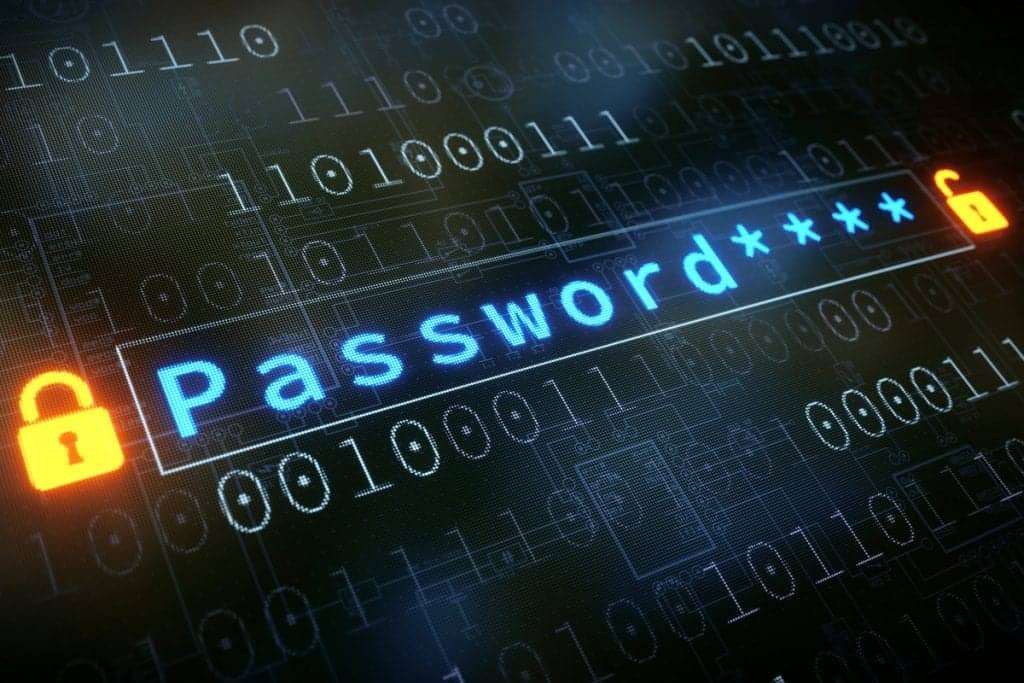Endpoint Detection and Response (EDR) is a cybersecurity solution that continuously monitors endpoint devices like computers, servers, and mobile devices for suspicious activities. EDR provides real-time threat detection, investigation capabilities, and automated response to protect your business from cyber attacks and data breaches.
In today’s digital landscape, cybercriminals target businesses of all sizes with increasingly sophisticated attacks. A single security breach can cost your organization thousands of dollars in downtime, lost data, and damaged reputation.
Without proper endpoint protection, your business remains vulnerable to ransomware, malware, and other cyber threats that can cripple operations and compromise sensitive information.
At CMIT Solutions, we understand the challenges you face in protecting your business from evolving cyber threats.
Our comprehensive cybersecurity services combine advanced EDR technology with expert management to safeguard your endpoints and maintain business continuity.
Understanding Endpoint Detection and Response (EDR)
EDR stands for Endpoint Detection and Response, a specialized cybersecurity approach that focuses on monitoring and protecting individual devices within your network. Unlike traditional antivirus software that relies on known threat signatures, an endpoint detection and response solution uses behavioral analytics and machine learning to identify suspicious activities in real-time.
💡 EDR shifts cybersecurity from reactive to proactive by continuously analyzing behavior at the endpoint level. This evolution is essential as threats increasingly bypass signature-based defenses.
Every device connected to your network, from employee laptops to servers, represents a potential entry point for cybercriminals. The Cybersecurity and Infrastructure Security Agency (CISA) reports that endpoints are frequently targeted in cyberattacks, making endpoint security a critical component of your overall security strategy.
EDR represents an evolution from reactive to proactive security measures. Traditional security solutions wait for threats to manifest before taking action, while EDR technology continuously monitors endpoint activities to detect and respond to threats before they can cause significant damage.
This proactive approach aligns with the National Institute of Standards and Technology (NIST) Cybersecurity Framework’s emphasis on continuous monitoring and rapid response capabilities.
Modern businesses require comprehensive cybersecurity strategies that go beyond basic protection. For organizations seeking to understand the broader cybersecurity landscape, learning about what is cyber security provides essential context for implementing effective EDR solutions.
Hypothetical Scenario: A manufacturing company noticed its production systems running slower than usual. Their traditional antivirus found no threats, but their EDR solution detected unusual network communications from a workstation. The investigation revealed malware attempting to steal production schedules and customer data, which was immediately contained before any information was compromised.
How EDR Works
EDR security operates through a systematic process that provides comprehensive protection across all your endpoints. Knowing how EDR works helps you appreciate its value in your security strategy.
- Data Collection and Monitoring: EDR agents installed on each endpoint device continuously collect data about system processes, file changes, network connections, and user activities. This creates a comprehensive baseline of normal device behavior.
- Threat Detection and Analysis: The security solution uses analytics techniques to detect suspicious system behavior by comparing current activities against established patterns. Machine learning algorithms identify anomalies that may indicate malicious activity.
- Alert Generation and Prioritization: When EDR detects potential threats, it generates alerts ranked by severity and potential impact. This helps your security team focus on the most critical incidents first.
- Investigation and Forensics: Security professionals can drill down into specific events to understand the scope and timeline of potential threats. This forensic capability provides essential context for decision-making.
- Automated Response and Remediation: EDR solutions can automatically isolate compromised endpoints, terminate malicious processes, and quarantine suspicious files. This rapid response minimizes damage and prevents threat propagation.
- Reporting and Compliance: The system generates detailed reports that help demonstrate compliance with industry regulations and provide insights for improving your overall security posture.
| EDR Stage | Primary Action | Typical Timeframe |
|---|---|---|
| Data Collection | Continuous monitoring | Real-time |
| Threat Detection | Behavioral analysis | Seconds to minutes |
| Alert Generation | Prioritized notifications | Immediate |
| Investigation | Forensic analysis | Minutes to hours |
| Response | Containment and remediation | Seconds to minutes |
| Reporting | Documentation and analysis | Ongoing |
Key EDR Capabilities and Features
Modern EDR solutions offer comprehensive capabilities designed to address the complex security challenges facing today’s businesses. These features work together to provide layered protection against sophisticated threats.
- Real-time Monitoring and Visibility: EDR provides continuous oversight of all endpoint activities, giving you complete visibility into what’s happening across your network. This transparency enables early detection of potential security incidents before they escalate.
- Behavioral Analytics and Anomaly Detection: Advanced algorithms analyze user and system behaviors to identify deviations from normal patterns. This approach catches threats that traditional signature-based tools might miss, including advanced persistent threats and zero-day attacks.
- Threat Hunting Capabilities: Proactive threat hunting allows security analysts to search for hidden threats within your environment. This human-driven approach complements automated detection methods and helps identify sophisticated attacks that may evade automated systems.
- Incident Response Automation: EDR systems can automate responses to common threats, reducing response times from hours to seconds. This automation is essential for containing fast-moving attacks like ransomware and preventing lateral movement across your network.
- Forensic Investigation Tools: Detailed logging and analysis capabilities enable thorough investigation of security incidents. These tools help determine attack methods, affected systems, and appropriate remediation steps for complete threat elimination.
- Integration with Security Ecosystems: Effective EDR solutions integrate seamlessly with existing security tools, including firewalls, SIEM systems, and other protection platforms. This integration creates unified security operations and enhances overall threat intelligence.
- Compliance Reporting: Automated reporting features help demonstrate compliance with industry regulations and provide audit trails for security incidents. This capability is particularly valuable for organizations in regulated industries.
⚠️ During a ransomware attack, multiple EDR capabilities work together: Real-time monitoring detects unusual file encryption activities, behavioral analytics identifies the attack pattern, automated response isolates affected systems, and forensic tools help trace the attack’s origin and extent.
Benefits of EDR for Modern Businesses
Implementing EDR technology provides significant advantages that directly impact your business operations, security, and bottom line. These benefits make EDR an essential component of modern cybersecurity strategies.
Improved Threat Detection and Response Times
EDR dramatically reduces the time between threat detection and response. Traditional security solutions might take days or weeks to identify advanced threats, while EDR can detect and respond to incidents within minutes. This rapid response capability is essential for minimizing damage from cyberattacks.
The NIST Cybersecurity Framework emphasizes the importance of rapid detection and response capabilities. Organizations that can quickly identify and contain threats experience significantly lower breach costs and faster recovery times. EDR helps achieve these faster response times through automated detection and response capabilities.
Reduced Business Disruption and Downtime
Cyber attacks can bring business operations to a halt, costing organizations thousands of dollars per hour in lost productivity. EDR’s ability to quickly isolate and contain threats minimizes operational disruption. The system can quarantine affected endpoints while allowing other systems to continue operating normally.
Enhanced Visibility into Security Incidents
Many organizations lack visibility into their security environment, making it difficult to understand the scope and impact of threats. EDR provides comprehensive visibility into endpoint activities, helping security teams make informed decisions about threat response and remediation. This enhanced visibility is particularly valuable for detecting insider threats and advanced persistent threats.
Better Compliance and Audit Capabilities
Industries such as healthcare, finance, and manufacturing face strict regulatory requirements for data protection and incident reporting. EDR solutions provide detailed audit trails and reporting capabilities that help demonstrate compliance with regulations like HIPAA, PCI DSS, and SOX.
Cost Savings from Prevented Breaches
The cost of preventing a cyber attack is significantly lower than recovering from one. Organizations with advanced security capabilities, including EDR, experience lower breach costs and faster recovery times. The investment in EDR technology typically pays for itself through prevented incidents and reduced recovery costs.
Proactive vs. Reactive Security Posture
EDR enables organizations to shift from reactive to proactive security approaches. Instead of waiting for attacks to succeed, businesses can identify and address threats before they cause damage. This proactive approach reduces risk and improves overall security effectiveness while supporting business continuity objectives.
| Traditional Security | EDR Benefits |
|---|---|
| Reactive threat response | Proactive threat hunting |
| Limited endpoint visibility | Comprehensive activity monitoring |
| Manual incident investigation | Automated forensic analysis |
| Signature-based detection | Behavioral analytics |
| Slow threat containment | Automated response capabilities |
| Basic compliance reporting | Detailed audit trails |
Don’t have in-house cybersecurity experts? Our managed EDR services bring 24/7 protection without the overhead, request a quote today.
EDR Challenges and How to Overcome Them
While EDR provides significant security benefits, organizations may encounter challenges during implementation and operation. Knowing these potential obstacles and their solutions helps ensure successful EDR adoption.
Alert fatigue represents one of the most common challenges with EDR implementation. The system’s comprehensive monitoring capabilities can generate numerous alerts, potentially overwhelming security teams. However, proper tuning and configuration can significantly reduce false positives.
Working with experienced managed security providers helps optimize alert thresholds and prioritization rules based on your specific environment and threat landscape.
💰 EDR can significantly reduce breach-related costs by preventing downtime and enabling faster recovery, making it a high-ROI cybersecurity investment for businesses of all sizes.
Integration complexity with existing systems can pose initial hurdles. Many organizations have invested in multiple security tools over the years, and ensuring seamless integration requires careful planning.
The key is selecting an endpoint detection and response solution with robust APIs and integration capabilities. Our professional implementation services will help manage these technical challenges and ensure optimal performance.
Staff training and expertise requirements shouldn’t be underestimated. EDR technology involves sophisticated analytics and investigation tools that require specialized knowledge. Organizations can address this challenge through comprehensive training programs or by partnering with managed EDR service providers who bring expert knowledge and 24/7 monitoring capabilities.
Cost and resource allocation concerns are valid considerations, especially for smaller businesses. However, the cost of implementing EDR is typically far less than the potential losses from a successful cyber attack. Many managed EDR solutions offer subscription-based pricing models that make advanced security capabilities accessible to organizations of all sizes.
Performance impact on endpoints is generally minimal with modern EDR solutions. Today’s EDR agents are designed to operate efficiently with minimal system resource consumption. Regular updates and optimization ensure that security protection doesn’t interfere with business productivity or user experience.
EDR Examples and Real-World Applications
EDR technology proves its value across various threat scenarios and business environments. Knowing these real-world applications helps illustrate how EDR protects organizations from diverse cyber threats.
- Ransomware Detection and Containment: EDR excels at detecting ransomware behavior patterns, such as rapid file encryption activities. When detected, the system can immediately isolate affected endpoints and prevent the malware from spreading to other network resources, protecting critical business data.
- Insider Threat Identification: Not all threats come from external sources. EDR monitors user behavior patterns to identify suspicious activities that might indicate insider threats, such as unauthorized data access or unusual file transfers during non-business hours.
- Advanced Persistent Threat (APT) Discovery: Sophisticated attackers often establish persistent access to networks and operate undetected for months. EDR’s continuous monitoring and behavioral analysis capabilities help identify subtle indicators of APT activities that traditional security tools might miss.
- Compliance Monitoring and Reporting: Organizations in regulated industries use EDR to monitor compliance-related activities and generate audit reports. The system tracks data access, user activities, and system changes required for regulatory compliance documentation.
- Remote Work Security Management: With the increase in remote work, EDR provides visibility and protection for endpoints outside the traditional network perimeter. This capability is essential for maintaining security across distributed workforces and ensuring consistent protection regardless of location.
- Supply Chain Attack Prevention: EDR can detect unusual activities that might indicate supply chain compromises, such as legitimate software exhibiting malicious behaviors after updates or installations, helping prevent sophisticated supply chain attacks.
Knowing various cyber threat types helps organizations better appreciate EDR’s protective capabilities. Threats like what is a whaling attack in cyber security demonstrate the sophisticated nature of modern attacks that require advanced detection and response solutions.
Hypothetical Scenario: A professional services firm noticed unusual network activity during off-hours. Their EDR solution revealed that an employee’s compromised laptop was attempting to access and exfiltrate client files. The system automatically isolated the device and alerted the security team, preventing a potential data breach that could have damaged client relationships and resulted in regulatory violations.
Types of EDR Solutions Available
Organizations can choose from various EDR deployment models based on their specific needs, resources, and technical capabilities. Getting to know these options helps ensure you select the most appropriate solution for your business environment.
On-premise EDR solutions provide complete control over data and system management but require significant internal resources and expertise. These solutions are typically suitable for large organizations with dedicated security teams and strict data sovereignty requirements. However, the management overhead and ongoing maintenance costs can be substantial for smaller organizations.
Cloud-based EDR solutions offer scalability, automatic updates, and reduced infrastructure requirements. Most small to medium businesses benefit from cloud-based deployments because they provide enterprise-grade security capabilities without the need for extensive internal resources. Cloud solutions also enable faster deployment and easier management across distributed environments.
Standalone EDR platforms focus specifically on endpoint detection and response capabilities. These solutions integrate with existing security tools and provide specialized functionality. Organizations with mature security operations often prefer a standalone EDR to complement their existing security infrastructure without replacing functional systems.
Integrated security platforms combine EDR with other security functions like endpoint protection, network security, and security information management. These comprehensive platforms can simplify management and improve coordination between security functions, making them attractive for organizations seeking unified security solutions.
Enterprise EDR solutions are designed for large organizations with complex environments and dedicated security teams. These solutions typically offer advanced customization options, extensive integration capabilities, and sophisticated analytics features that support complex security operations.
📌 Businesses should choose between cloud-based, on-premise, or managed EDR based on size, security maturity, and regulatory needs; there is no one-size-fits-all model.
Small business EDR solutions focus on ease of use, automated management, and cost-effectiveness. These solutions often include managed services components to address the limited security expertise available in smaller organizations while providing enterprise-grade protection capabilities.
Ready to reduce downtime, cut breach costs, and meet compliance goals? Talk to our cybersecurity team today to implement EDR tailored to your business.
An Overview of Managed Endpoint Detection and Response Software
Managed EDR represents a strategic approach to endpoint security that combines advanced technology with expert human oversight. This service model addresses the growing complexity of cybersecurity threats while acknowledging that many organizations lack the internal resources to effectively manage sophisticated security tools.
Managed EDR services provide 24/7 monitoring and response capabilities through dedicated security operations teams. These experts continuously analyze endpoint data, investigate suspicious activities, and respond to threats on behalf of client organizations.
This approach ensures that security incidents receive immediate attention regardless of when they occur, providing round-the-clock protection.
The benefits of outsourced EDR management extend beyond simple monitoring. Managed security service providers bring specialized expertise, threat intelligence, and established incident response procedures that would be costly and time-consuming for individual organizations to develop internally.
This expertise proves particularly valuable when dealing with sophisticated attacks that require deep technical knowledge and experience.
Organizations should expect comprehensive services from managed EDR providers, including initial deployment planning, ongoing system optimization, regular threat hunting activities, and detailed incident reporting. The best providers also offer integration services to ensure EDR works effectively with existing security tools and business processes while maintaining operational efficiency.
Managed EDR services complement rather than replace internal IT teams. While external providers handle the specialized security monitoring and analysis functions, internal teams maintain responsibility for business applications, user support, and strategic technology decisions.
This division of responsibilities allows organizations to benefit from expert security services while retaining control over their technology environment.
Cost considerations for managed EDR typically involve predictable monthly subscription fees rather than large upfront investments in technology and personnel. This pricing model makes advanced security capabilities accessible to organizations of all sizes and provides predictable budgeting for security services.
The return on investment often becomes apparent quickly when considering the costs of security breaches and the value of uninterrupted business operations.
At CMIT Solutions, we’ve been providing managed technology services for over 25 years, and our managed EDR approach combines cutting-edge technology with local expertise and national resources. We provide comprehensive endpoint security management that allows you to focus on your core business while we handle the complexities of cybersecurity threat detection and response.
EDR vs. Other Cybersecurity Solutions
⚖️ While EDR focuses on endpoints, its full potential is unlocked when integrated with broader cybersecurity systems like XDR and SIEM for holistic defense.
Knowing how EDR compares to other security technologies helps organizations make informed decisions about their security investments and architecture. Each solution addresses specific aspects of cybersecurity, and many work together to provide comprehensive protection.
- EDR vs. Traditional Antivirus: Traditional antivirus focuses on preventing known malware using signature-based detection methods. An effective EDR solution goes beyond prevention to provide continuous monitoring, behavioral analysis, and response capabilities for unknown and advanced threats that traditional antivirus cannot detect.
- EDR vs. Endpoint Protection Platforms (EPP): Endpoint protection platforms typically combine antivirus, firewall, and basic threat detection capabilities. While EPP provides foundational protection, EDR offers deeper visibility, advanced analytics, and more sophisticated response capabilities for complex threat scenarios.
- EDR vs. SIEM Systems: Security Information and Event Management systems collect and analyze log data from across the IT infrastructure. EDR specializes in detailed endpoint monitoring and provides the granular endpoint data that SIEM systems analyze for broader threat correlation and enterprise-wide security intelligence.
- EDR vs. Extended Detection and Response (XDR): Extended detection and response expands beyond endpoints to include network, cloud, and application monitoring. While EDR focuses specifically on endpoint security, XDR provides broader visibility across the entire security infrastructure for comprehensive threat detection.
- Integration Capabilities: Modern security architectures benefit from integrating multiple technologies. EDR solutions work effectively with existing security tools, providing specialized endpoint intelligence that enhances overall security operations and enables coordinated threat response across multiple security layers.
| Solution Type | Primary Focus | Detection Method | Response Capability | Best For |
|---|---|---|---|---|
| Traditional Antivirus | Known malware prevention | Signature-based | Limited | Basic protection |
| EPP | Multi-layered prevention | Signatures + basic behavior | Moderate | Foundational security |
| EDR | Endpoint detection & response | Advanced behavioral analytics | Comprehensive | Advanced threat detection |
| SIEM | Enterprise-wide correlation | Log analysis | Coordinated | Large organizations |
| XDR | Cross-platform visibility | Multi-source analytics | Orchestrated | Complex environments |
Implementing EDR in Your Organization
Successful EDR implementation requires careful planning, proper execution, and ongoing optimization. Following a structured approach ensures maximum security benefits while minimizing disruption to business operations.
- Security Assessment and Planning: Begin with a comprehensive evaluation of your current security posture, identifying gaps and vulnerabilities that EDR can address. Document your endpoints, assess network architecture, and define security objectives that align with business goals and regulatory requirements.
- Solution Selection and Evaluation: Research and evaluate different EDR solutions based on your specific requirements, budget constraints, and technical capabilities. Consider factors such as detection accuracy, response capabilities, integration requirements, and vendor support quality when making your decision.
- Deployment Strategies and Best Practices: Develop a phased rollout plan that minimizes business disruption while ensuring comprehensive coverage. Start with critical systems and gradually expand to all endpoints, monitoring performance and adjusting configurations as needed throughout the process.
- Staff Training and Change Management: Prepare your team for new security procedures and technologies through comprehensive training programs. Establish clear roles and responsibilities for security incident management and response procedures to ensure effective EDR utilization.
- Ongoing Monitoring and Optimization: Continuously monitor system performance, adjust detection rules, and optimize response procedures based on observed threats and false positive rates. Regular reviews ensure that your EDR solution continues to meet evolving security needs.
- Integration with Existing Systems: Ensure seamless integration with current security tools, network infrastructure, and business applications. Proper integration maximizes the value of existing investments while enhancing overall security effectiveness across your organization.
Comprehensive cybersecurity requires knowing various technical aspects of protection. Learning about what is hashing in cyber security provides valuable context for getting to know how EDR solutions protect data integrity and support forensic investigations.
A typical CMIT client implementation begins with a thorough security assessment of all endpoint devices and network connections. We then deploy EDR agents during planned maintenance windows to minimize business disruption.
Our team provides comprehensive staff training and establishes monitoring procedures that integrate with existing IT management processes, ensuring smooth operations from day one.
While EDR is a critical component of modern cybersecurity, it works best as part of a comprehensive security strategy. For businesses looking to strengthen their overall security posture, we’ve developed a practical resource that covers essential protection measures beyond just endpoint security.
Our 16-point cybersecurity checklist provides actionable steps you can take immediately to protect your business from various cyber threats, complementing your EDR implementation with additional layers of defense.
Protect your business before threats take hold. Schedule a free consultation with our experts to learn how EDR can safeguard your endpoints.
The Future of Endpoint Detection and Response
The cybersecurity landscape continues evolving rapidly, with new threats emerging daily and attack methods becoming increasingly sophisticated. EDR technology adapts to meet these challenges through continuous innovation and enhancement of detection and response capabilities.
Artificial intelligence and machine learning advancements are transforming how EDR solutions operate. These technologies enable more accurate threat detection, reduced false positives, and automated response capabilities that can adapt to new attack methods without human intervention.
Future EDR systems will likely incorporate more advanced AI capabilities to stay ahead of increasingly sophisticated cyber threats.
Integration with emerging technologies such as Internet of Things (IoT) devices, edge computing, and 5G networks presents both opportunities and challenges for EDR solutions. As organizations adopt these technologies, EDR must evolve to provide protection across diverse and distributed computing environments while maintaining performance and security effectiveness.
💡 Advances in AI, quantum resilience, and IoT integration are shaping next-gen EDR tools to meet tomorrow’s evolving cybersecurity demands.
The evolving threat landscape drives continuous EDR development. Cybercriminals constantly develop new attack methods, and EDR solutions must adapt to detect and respond to these emerging threats. This includes addressing challenges such as fileless malware, supply chain attacks, and sophisticated social engineering campaigns that target endpoint users.
Regulatory and compliance developments also influence EDR evolution. Government agencies like CISA continue updating cybersecurity guidelines and requirements, which impact how organizations implement and manage EDR solutions. According to CISA’s cybersecurity best practices documentation, staying current with these requirements ensures that your security strategy remains compliant and effective.
Research from cybersecurity programs at leading universities indicates that the integration of quantum-resistant encryption and advanced behavioral analytics will become increasingly important as quantum computing capabilities advance. Organizations that invest in adaptable EDR platforms position themselves well for future security challenges and technological developments.
Choosing the Right EDR Solution for Your Business
Selecting an appropriate EDR solution requires careful consideration of multiple factors that impact both security effectiveness and business operations. Making the right choice ensures optimal protection while maintaining operational efficiency and budget compliance.
- Business Size and Complexity Considerations: Larger organizations typically require more sophisticated EDR capabilities with extensive customization options and integration features. Smaller businesses often benefit from managed EDR solutions that provide enterprise-grade protection without requiring dedicated security personnel or extensive technical expertise.
- Industry-Specific Requirements: Different industries face unique regulatory requirements and threat profiles. Healthcare organizations need HIPAA-compliant solutions, while financial services require specialized fraud detection capabilities. Manufacturing companies often prioritize operational technology protection and industrial control system security.
- Budget and Resource Constraints: EDR solutions range from basic monitoring tools to comprehensive security platforms with varying cost structures. Evaluate the total cost of ownership, including licensing, implementation, training, and ongoing management expenses. Consider managed services options that can provide advanced capabilities at predictable monthly costs.
- Integration Requirements: Assess how well potential EDR solutions integrate with your existing security tools, network infrastructure, and business applications. Seamless integration maximizes the value of current investments while enhancing overall security effectiveness and operational efficiency.
- Support and Managed Services Needs: Determine whether your organization has the internal expertise to manage EDR effectively or would benefit from managed services support. Consider factors such as 24/7 monitoring requirements, incident response capabilities, and ongoing system optimization needs when making this evaluation.
- Evaluation Criteria and Decision Framework: Establish clear criteria for evaluating EDR solutions, including detection accuracy, response capabilities, ease of use, vendor reputation, and long-term viability. Create a structured evaluation process that involves key stakeholders and technical personnel to ensure a comprehensive assessment.
| Business Type | EDR Requirements | Recommended Approach | Key Considerations |
|---|---|---|---|
| Small Business (10-50 employees) | Basic monitoring, managed services | Cloud-based managed EDR | Cost-effectiveness, ease of use |
| Medium Business (50-200 employees) | Advanced detection, some customization | Hybrid managed solution | Scalability, compliance |
| Large Enterprise (200+ employees) | Full customization, integration | On-premise or advanced cloud | Complex integrations, dedicated staff |
| Regulated Industries | Compliance features, audit trails | Industry-specific solutions | Regulatory requirements |
Why Choose CMIT Solutions for Your EDR Needs
We bring over 25 years of cybersecurity expertise to help protect businesses like yours from evolving cyber threats. Our comprehensive approach to managed EDR services combines advanced technology with local support and national resources to deliver enterprise-grade security that fits your budget and business requirements.
We’re honored to be recognized as a leading Managed Service Provider with consistent rankings on Entrepreneur Magazine’s Franchise 500 list for more than a decade. ConnectWise named CMIT Solutions Partner of the Year, their highest partner honor, demonstrating our commitment to excellence in managed security services. Our team of certified security professionals understands the unique challenges facing small and medium businesses in today’s threat landscape.
We partner with leading EDR technology vendors to ensure you receive best-in-class protection capabilities. These partnerships enable us to offer competitive pricing, advanced features, and ongoing product support that keeps your security infrastructure current with emerging threats.
Our vendor relationships also provide access to cutting-edge threat intelligence and research that enhances protection effectiveness.
Our locally owned and operated model ensures personalized service and rapid response times when you need support. Unlike large national providers, we combine the resources of our multi-location network with the responsiveness and accountability of local ownership.
✔️ With national resources and local support, we deliver personalized, enterprise-grade cybersecurity to businesses that can’t afford to be unprotected.
This approach provides the best of both worlds: enterprise-grade capabilities with personalized attention to your specific business needs.
We provide comprehensive 24/7 monitoring and support capabilities through our security operations center. Our expert analysts continuously monitor your endpoints for suspicious activities, investigate potential threats, and respond to security incidents on your behalf. This round-the-clock protection ensures that your business remains secure even when your internal team is unavailable.
Our managed EDR services integrate seamlessly with your existing IT infrastructure and business processes. We work closely with your team to ensure smooth implementation, provide comprehensive training, and establish clear communication procedures for security incidents. This collaborative approach minimizes disruption while maximizing security benefits for your organization.
Ready to enhance your organization’s security posture with professional EDR management? Contact us today at (800) 399-2648 to schedule your free security consultation and learn how we can protect your business from cyber threats.
Frequently Asked Questions About EDR
What Is the Difference Between EDR and Antivirus?
EDR provides continuous monitoring and behavioral analysis of endpoint activities, while traditional antivirus primarily focuses on detecting known malware using signature-based methods. EDR offers advanced threat hunting, forensic investigation capabilities, and automated response features that go far beyond basic virus protection and malware prevention.
How Much Does EDR Cost for Small Businesses?
EDR costs vary based on the number of endpoints, features required, and service model chosen. Managed EDR services typically range from cost-effective monthly subscriptions per endpoint, while standalone solutions may have different pricing structures. The investment is significantly less than the potential costs of a successful cyberattack or data breach.
Do I Need Technical Expertise to Manage EDR?
While EDR systems can be complex, managed EDR services eliminate the need for extensive internal cybersecurity expertise. Managed service providers handle system monitoring, threat analysis, and incident response activities, allowing your security operations teams to focus on core business operations while maintaining comprehensive security protection.
How Quickly Can EDR Be Implemented?
Cloud-based EDR solutions can typically be deployed within days or weeks, depending on the number of endpoints and the complexity of your environment. Managed EDR services often provide faster implementation timelines because experienced security professionals handle the deployment process, system configuration, and integration with existing security tools.
What Happens if EDR Detects a Threat?
When EDR detects a potential threat, it immediately generates alerts prioritized by severity level and impact assessment. Automated response capabilities can isolate affected endpoints, terminate malicious processes, and prevent threat propagation across your network. Security analysts then investigate the security incident and implement appropriate remediation measures to restore normal operations.
Can EDR Work With My Existing Security Tools?
Modern EDR solutions are designed to integrate effectively with existing security infrastructure, including firewalls, SIEM systems, and other endpoint protection platforms. This integration enhances overall security operations by providing specialized endpoint intelligence that complements broader security monitoring capabilities and enables coordinated threat response across multiple security layers.
Is Cloud-Based EDR Secure?
Cloud-based EDR solutions employ enterprise-grade security measures, including data encryption, access controls, and compliance certifications that meet strict industry standards. Leading providers maintain security standards that often exceed what individual organizations can achieve internally. Cloud deployment also enables faster threat intelligence updates and more scalable protection capabilities across distributed environments.







